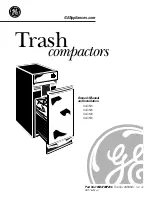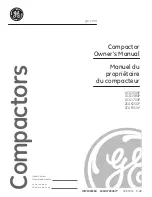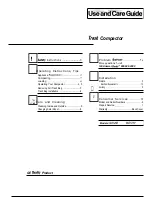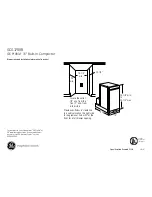
TROUBLESHOOTING
Troubleshooting - 66
Electrical Troubleshooting Using The
Tractor Control Module (TCM)
The TCM monitors the electronic circuits necessary for
the engine, starter, and PTO to function. These “input”
circuits include the PTO Switch, Neutral Switch, Park-
ing Brake Switch, Key Switch, Seat Switch, and Gen-
erator Presence. The TCM is programmed to allow the
engine, starter, or PTO to operate only when specific
input criteria are satisfied. The engine, start, and PTO
circuits are controlled by “outputs” from the TCM.
For troubleshooting purposes, the TCM includes
red LED lights for each circuit. The LED lights will
activate when the input or output circuit is activated.
The TCM is divided into two sections: the left (input)
side displays the 8 inputs with red LED lights; the
right (output) side displays the 5 outputs also with
red LED lights. The TCM has two power supplies.
The first supplies powers to the computer indepen
-
dent of the key switch so that the TCM does not
turn on and off with each key switch on & off cycle.
(Note: When the battery disconnect switch is turned
to Off, the TCM is also turned off). The second sup
-
ply energizes the rest of the computer when the key
switch is turned on.
When the battery disconnect switch is turned on, the
Power LED light (J) will illuminate. If the system
voltage drops below a preset value when the key
switch is off, or if the power unit sits unused for
more than 15 days, the TCM will automatically go to
‘Sleep’ mode and enter a reduced power state. To
‘Wake’ the TCM, turn the battery disconnect switch
off and then back on.
A
B
C
D
E
F
G
H
J
K
L
M
N
O
Input Circuits
Brake Switch (A)
The light indicates the circuit is closed and the
parking brake is engaged. In order for this light to
operate, the key switch must be in the On position.
Neutral Switch (B)
The light indicates the circuit is closed and the
power unit’s forward/reverse control is in neutral. In
order for this light to operate, the key switch must
be in the On position and the forward/reverse con-
trol (SDLA) must be in the neutral position.
PTO Switch (C)
The light indicates the PTO switch is in the On
position. In order for this light to operate, the key
switch must be in the On position and the PTO
switch must be in the On (engaged) position.
Seat Switch (D)
The light indicates that an operator is present in
the seat. In order for this light to operate, the key
switch must be in the On position and the operator
must be present in the seat.
Engine Starter (E)
The light indicates that the key switch is turned to
the Start position.
Key Switch On (F)
The light indicates that the key switch is turned to
the On position. The key switch must be in the On
position for the TCM to activate.
Generator Present (G)
The light indicates that the generator is connected to
the power unit, which activates a specific set of crite
-
ria and allows the PTO to operate without an opera-
tor present on the seat. In order for this light to oper-
ate, the key switch must be in the On position and a
generator must be connected to the power unit.
Generator Switch (H)
The light indicates that the switch on the genera-
tor is set to the On (engaged) position. In order for
this light to operate, the key switch must be in the
On position, a generator must be connected to the
power unit, and the switch on the generator must
be pulled up to the On (engaged) position.
Power (J)
This light is located at the bottom right corner of the
TCM. This light indicates that there is full time power
to the TCM and is only shut off by the battery discon
-
nect switch or if the TCM enters the ‘Sleep’ mode. It
keeps the TCM computer energized to eliminate the
delay that would otherwise be present when the key
switch is first turned to the On position.











































